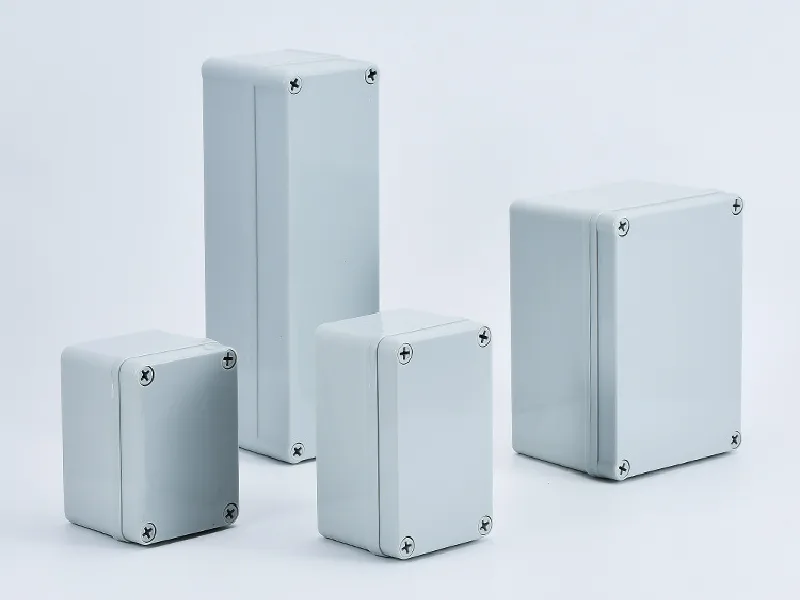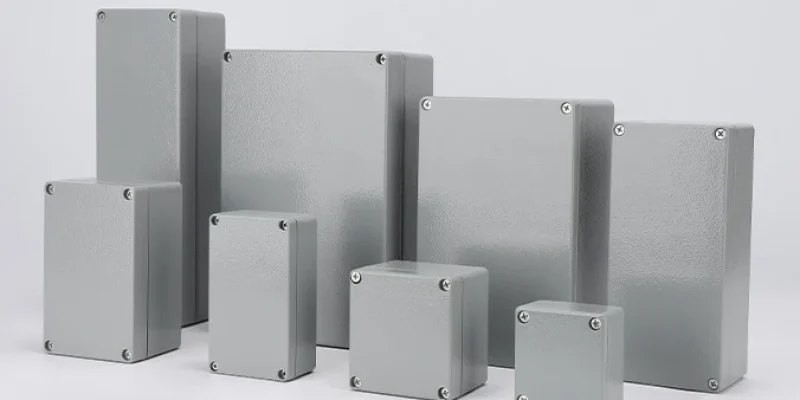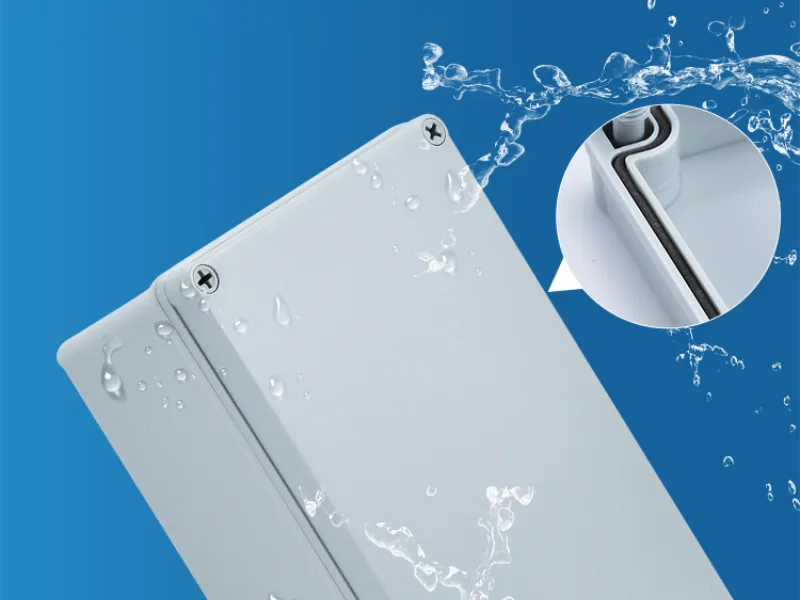Underground electrical junction boxes are specialized enclosures designed to protect and provide access to electrical connections in subterranean installations, serving as crucial components in modern infrastructure for safely managing underground wiring systems.

Purpose and Key Features
Designed to safeguard electrical connections in challenging underground environments, these specialized enclosures serve multiple critical functions. They provide a secure space for splicing, terminating, and connecting underground cables while offering protection against various threats. Key features include:
- Waterproof and dustproof construction to prevent moisture infiltration and contamination.
- Impact-resistant materials to withstand physical damage and crushing forces.
- Shielding from chemical exposure and environmental contaminants.
- Convenient access points for maintenance and repairs without compromising protection.
- Ability to house and organize multiple cable connections in a single location.
These robust boxes ensure the longevity and reliability of subterranean electrical systems, playing a vital role in maintaining infrastructure integrity.
Installation Guidelines and Challenges
Proper installation of underground junction boxes requires careful consideration of location and depth. These enclosures should be placed in well-drained areas, with sidewalks within 2% of level in all directions. Typically, they are buried at least 18 inches deep and marked for future access. However, installers face challenges such as water accumulation, which can be mitigated through:
- Using open-bottomed splice boxes.
- Installing drainage systems with pea gravel.
- Employing waterproof connections and seals.
It’s crucial to avoid areas prone to standing water or heavy vehicular traffic. Condensation within conduits is a common issue, as they can fill with water without proper drainage. Addressing these challenges ensures the longevity and effectiveness of underground electrical systems.
Waterproofing and Drainage Solutions
Effective waterproofing and drainage solutions are crucial for maintaining the integrity of underground junction boxes. Open-bottomed splice boxes allow natural drainage, while installing a layer of pea gravel beneath the box enhances water dispersion. Some manufacturers offer specialized cast resin joint packages for water-tight underground connections, which include 2-component PUR cast resin in transparent mixing bags. To combat condensation, which can lead to water accumulation in conduits, proper sealing techniques and the use of waterproof connections are essential. These measures not only protect the electrical components but also extend the lifespan of the underground infrastructure.
Underground Installation Benefits
Underground junction boxes are installed for several practical reasons that enhance the safety, efficiency, and aesthetics of electrical systems:
- Protection from environmental factors: Buried junction boxes shield electrical connections from weather, UV radiation, and physical damage, ensuring longevity and reliability.
- Aesthetic improvements: By concealing electrical connections underground, junction boxes contribute to a cleaner, more visually appealing landscape, particularly important in urban areas and resorts.
- Space optimization: Underground installation frees up above-ground space, allowing for more efficient land use in crowded urban environments or areas with strict zoning regulations.
- Safety enhancement: Burying electrical connections reduces the risk of accidental contact, vandalism, and electrical hazards associated with exposed wiring.
- Maintenance accessibility: In-ground junction boxes provide organized access points for maintenance and modifications to electrical systems without disrupting surface-level activities.
These benefits make underground junction boxes an essential component in modern infrastructure projects, balancing functionality with safety and aesthetics in electrical system design.
Safety Standards and Regulations
Electrical codes mandate strict safety standards for underground junction boxes to ensure public safety and system reliability. These enclosures must be constructed of non-combustible materials, properly grounded, and sized appropriately for the number of conductors they contain. The National Electrical Code (NEC) Section 110.26(A) requires a clear working space of at least 30 inches wide by 36 inches deep around junction boxes for safe access and maintenance. Additionally, most local building codes stipulate that these boxes must remain accessible and cannot be permanently buried underground without means of access. For installations in hazardous locations, junction boxes must be clearly marked to indicate potential dangers, further emphasizing the importance of safety in electrical infrastructure.
Environmental Protection Mechanisms
Weatherproof junction boxes provide robust protection against various environmental conditions, ensuring the safety and longevity of electrical connections in outdoor settings. These specialized enclosures utilize several key features to safeguard against moisture, dust, and extreme temperatures:
- Watertight seals: Gaskets or rubber seals around the cover create a barrier against water ingress, preventing short circuits and corrosion.
- Durable materials: Constructed from weather-resistant materials like heavy-duty plastic, aluminum, or stainless steel to withstand UV rays, temperature fluctuations, and physical impacts.
- IP or NEMA ratings: Designed to meet specific Ingress Protection (IP) or National Electrical Manufacturers Association (NEMA) standards, ensuring protection against dust and water penetration.
- Condensation prevention: Internal design features help minimize condensation buildup, which could otherwise compromise electrical integrity.
By incorporating these protective elements, weatherproof junction boxes significantly reduce the risk of electrical failures and extend the lifespan of outdoor electrical systems, making them essential for maintaining safe and reliable power distribution in challenging environments.
Environmental Considerations for Long-Term Durability
When selecting underground electrical junction boxes for long-term durability, environmental factors play a crucial role. The choice of materials significantly impacts the box’s resilience against corrosive elements and extreme conditions:
- Stainless steel offers excellent corrosion resistance, making it ideal for harsh environments and areas exposed to chemicals or saltwater.
- Fiberglass reinforced polyester (FRP) provides high chemical resistance and immunity to rust, suitable for locations with corrosive soil or frequent exposure to industrial pollutants.
- Polycarbonate enclosures offer good impact resistance and electrical insulation, beneficial in areas prone to physical damage or temperature fluctuations.
UV radiation can degrade certain materials over time, particularly plastics. High-quality polycarbonate with appropriate additives can resist UV-induced brittleness and discoloration. For areas with extreme temperature variations, materials that resist expansion and contraction, such as certain thermoplastics, are preferable to prevent deformation and maintain seal integrity. By carefully considering these environmental factors, engineers can select junction boxes that ensure long-lasting protection for underground electrical systems in diverse settings.
Material Innovations in Underground Junction Boxes
Material innovations in underground junction boxes have significantly enhanced their durability and performance in challenging subterranean environments. Advanced composite materials, such as those used in Charles Industries’ Tier Rated Underground Enclosures™ (TRUE), offer superior strength and chemical resistance while remaining lightweight for easy handling and installation. These materials, combined with Resin Transfer Molding (RTM) processes, provide Tier 15 and 22 performance ratings, ensuring robust protection against physical stresses and environmental factors.
High-performance plastics like DuPont’s Zytel technology, developed in collaboration with TE Connectivity, have improved junction boxes’ heat resistance, crucial for maintaining integrity in fluctuating underground temperatures. Additionally, modular designs incorporating materials that allow for easy expansion and reconfiguration have become increasingly popular, offering cost-effective scalability for growing industrial facilities. These material advancements not only extend the lifespan of underground electrical systems but also enhance their adaptability to evolving infrastructure needs.
Sealing Mechanisms Against Moisture
Waterproof junction boxes employ sophisticated sealing mechanisms to protect electrical connections from moisture infiltration. Key features include:
- Rubber or silicone gaskets that create a watertight barrier between the housing and cover.
- Specialized cable entry points with sealing mechanisms to prevent water ingress through wire openings.
- IP68-rated designs that can withstand complete submersion in water for extended periods.
- Continuously welded seams in metal enclosures to achieve hermetic sealing.
These sealing techniques not only guard against water but also protect internal components from dust, chemicals, and other contaminants. High-quality junction boxes utilize UL-rated closed cell rubber for gaskets and seals, ensuring long-lasting protection in wet environments. By implementing these advanced sealing mechanisms, waterproof junction boxes maintain the integrity of electrical connections even in the most challenging outdoor conditions.
Sustainable Material Choices
Sustainable material choices for underground junction boxes are increasingly prioritized to reduce environmental impact while maintaining performance. Manufacturers like Günther Spelsberg GmbH + Co. KG have developed products such as the i12 GreenLine junction box, which consists of at least 90% post-consumer recyclate (PCR). This innovative approach uses LDPE recyclate for the base and PP recyclate for the cover, reducing the ecological footprint by approximately 40% compared to traditional fossil-based plastics.
Other sustainable options include fiberglass enclosures, which offer durability and corrosion resistance while consuming less energy in production compared to metal alternatives. Some fiberglass products contain up to 80% recycled glass, further enhancing their sustainability profile. Aluminum junction boxes also present an eco-friendly choice due to their high recyclability and the significantly lower energy requirements for recycling compared to primary production. These material innovations demonstrate that sustainability in underground electrical systems can be achieved without compromising on quality, safety, or longevity.
Related Articles
How Junction Boxes Affect Power Supply
Solar Panel Junction Box Guide
Understanding Junction Boxes: Essential Components for Safe and Efficient Electrical Systems



